While birds are delightful and enjoyable to watch in your backyard, birds can be a nuisance when they invade your garden. To keep the birds away from your vegetables and fruits in the garden, it is a good idea to install bird repellents. Bird repellents are very effective for keeping birds away and protecting your investment.
Author: admin
Get a Closer Look at Your Backyard Hummingbirds with a Window Mounted Feeder
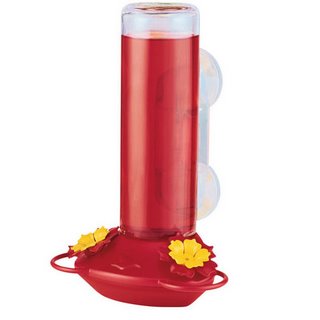 Hummingbirds are delightful little birds that are very interesting to watch. To get a better look at these fascinating birds, a window feeder is great for attracting and viewing hummingbirds at your window. Make sure that your window feeder is properly maintained and safely secured to the window in order to keep the hummingbirds coming back.
Hummingbirds are delightful little birds that are very interesting to watch. To get a better look at these fascinating birds, a window feeder is great for attracting and viewing hummingbirds at your window. Make sure that your window feeder is properly maintained and safely secured to the window in order to keep the hummingbirds coming back.
How to Protect Your Backyard Birds from Predators
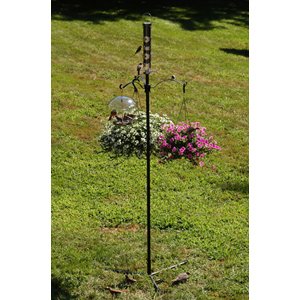 Many birds die every year from trauma or predators, so it is important to make your backyard a haven for birds. Some songbirds can live up to 10 or 12 years if they live a safe, trauma-free environment. Creating a safe environment for birds in your yard is essential for the health of your backyard birds.
Many birds die every year from trauma or predators, so it is important to make your backyard a haven for birds. Some songbirds can live up to 10 or 12 years if they live a safe, trauma-free environment. Creating a safe environment for birds in your yard is essential for the health of your backyard birds.
The greatest danger to backyard birds is a family pet, such as a cat or dog. Young birds are very vulnerable to cats and dogs during the spring and summer. During this time, it is a good idea to keep your cat indoors and your dog on a lead or chain when in your backyard. Keep neighbor pets out by installing a fence around your yard. To protect birds from stray dogs and cats, call your local branch or SPCA to pick up strays.
Other predators such as squirrels, raccoons, opossums and others can also be a nuisance to birds. Squirrels like to get into the nest boxes to eat the bird eggs and young birds. In order to protect your backyard birds from a variety of small animals, set up traps and relocate them to another area.
Another way to protect young birds from other larger birds is to keep evergreen branches on the ground around nesting boxes or bird houses. This helps to provide young birds with cover in case they fall from the nest. Also, do not try to seek out the bird’s nests to see the young birds. This will attract predators to the nest.
The best way to protect birds is to set up nest boxes or birdhouses that hang from a pole or mounted to a pole. By using a pole, such as the Ultimate Yard System by Droll Yankees, small animals, cats, and dogs will have a difficult time getting to your backyard birds. You may also want to install a predator guard on the pole, such as a baffle or a metal sleeve, to make it harder to climb up the pole and get to the birds.
Extra reference for those fixing their patio: Los Angeles deck construction.
Choosing a Hopper-Style Bird Feeder
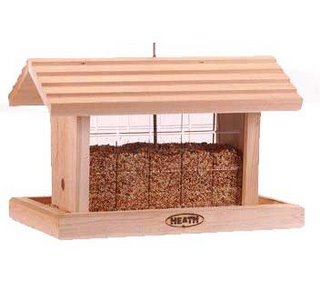 This popular type of bird feeder is perfect for a variety of wild birds and is available in a variety of styles. The basic style includes a platform-style base with a covered roof and sides, such as the Redwood Hopper Bird Feeder w/ 7 lb capacity. Another type of hopper feeder, such as the Garden Song Red Tube Feeder with Seed Catcher, consists of a tube with a plate at the bottom for catching bird seed. Other shapes of hopper feeders include round, square, rectangular or tube shaped.
This popular type of bird feeder is perfect for a variety of wild birds and is available in a variety of styles. The basic style includes a platform-style base with a covered roof and sides, such as the Redwood Hopper Bird Feeder w/ 7 lb capacity. Another type of hopper feeder, such as the Garden Song Red Tube Feeder with Seed Catcher, consists of a tube with a plate at the bottom for catching bird seed. Other shapes of hopper feeders include round, square, rectangular or tube shaped.
No matter what style you choose, bird seed is dispensed by gravity as the birds take the bird seed from the feeder. The bird seed may taken from the bottom or opening along the sides that allow the seed to be taken at multiple locations. This type of feeder holds a large amount of seed and ideal for feeding multiple birds.
Hopper-style feeders may be adjusted or chosen depending on the type of bird that you want to attract. A feeder that has smaller holes is ideal feeding small types of birds. Tube feeders that don’t have perches are great for feeding chickadees, nuthatches, and other types of birds that cling. Other types of feeders are designed for use with large types of birds.
When filling up your hopper-style feeder with bird seed, take in consideration the type of bird that you would like to attract. If you use a mixed bird seed, some may be discarded by the birds to get to the seed that they want to eat. For more helpful bird tips and great bird products, check out Rachel’s Robin.
How to Place Bird Feeders in Your Yard
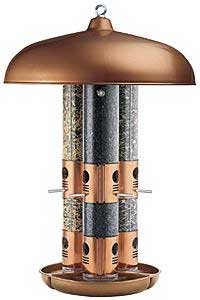 It usually doesn’t matter where you place your bird feeders if the birds are able to easily find the feeders and feed from them regularly. However, if you are having problems attracting birds to your yard, try following these steps to make your feeders more attractive to birds:
It usually doesn’t matter where you place your bird feeders if the birds are able to easily find the feeders and feed from them regularly. However, if you are having problems attracting birds to your yard, try following these steps to make your feeders more attractive to birds:
The Blossom Hummingbird Feeder – Pretty
Hummingbird/Nectar birdfeeders are available in many different styles. Some are decorative while others are not so beautiful .. but functional. 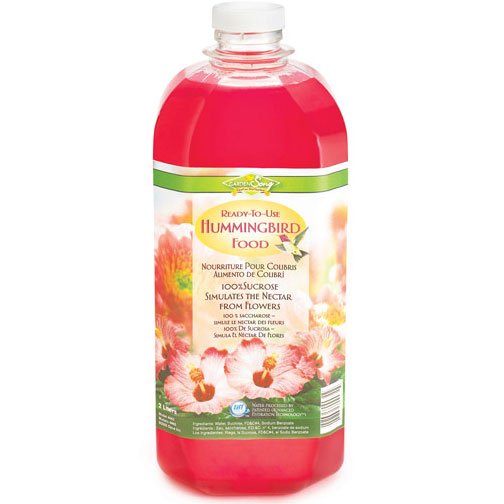 All hummingbird feeders are made to hold hummingbird nectar. Your personal tastes will lend to what type you choose. You can make your own nectar recipe or buy pre-made hummingbird nectar mixes.
All hummingbird feeders are made to hold hummingbird nectar. Your personal tastes will lend to what type you choose. You can make your own nectar recipe or buy pre-made hummingbird nectar mixes.
Types of Hummingbird/Nectar Feeders
- Hummingbird Bottle or Gravity Feeders – Bottle feeders have an inverted bottle which empties into a feeding port container or tube below the main body. They are often colored red. They come in glass or plastic.
Hummingbird Saucer or Dish Feeders – Saucer feeders for hummingbirds are most often in a red, dish like container with a cover. Tiny holes are in the cover through which the hummingbird can sip the nectar. These holes are large enough for the beaks of a hummingbird but often too small for the beaks of larger wild birds. Saucer hummingbird feeders are glass or plastic. - Oriole Feeders – An oriole feeder is essentially designed the same way as a saucer hummingbird feeder but is larger, has longer perches to support orioles and other birds larger than a hummingbird and is usually colored orange instead of red. Often you can skewer an orange half on the top of the feeder and give orioles both nectar and orange citrus slices which they love.
Hummingbird/nectar feeders are often made of plastic although glass is popular for the more decorative hummingbird nectar feeders.
The advantages of using glass hummingbird feeders or metal hummingbird feeders are that they are easier to keep clean than plastic. Glass syrup holders provide slightly better insulation from the sun and they also last longer than plastic feeders.
The down side of glass is that it is breakable and heavy.
Prevent Insects from Invading Your Hummingbird Feeders
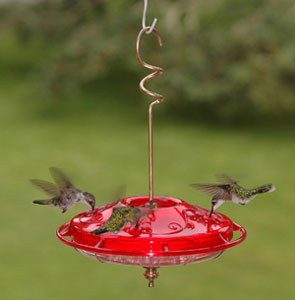 Insects love the sweet nectar in a hummingbird feeder and will find a way to get to the nectar in the feeder. The two most common insects to plague hummingbird feeders are bees and ants. To prevent these insects from invading your hummingbird feeders it is important to follow these simple steps:
Insects love the sweet nectar in a hummingbird feeder and will find a way to get to the nectar in the feeder. The two most common insects to plague hummingbird feeders are bees and ants. To prevent these insects from invading your hummingbird feeders it is important to follow these simple steps:
1. When filling your hummingbird feeder, make sure to wipe away and clean any nectar that spills on the outside of the feeder.
2. To help prevent bees, wasps and other types of flying insects, use a feeder with bee guards or nectar guards, such as the HummZinger Fancy Hummingbird Feeder. When using this type of hummingbird feeder, bees and wasps are deterred from getting to the nectar.
3. Another trick is set up a fine spray of water around the feeder to help keep flying away. Hummingbirds love to bath in the fine spray of water.
4. An ant guard is also helpful for keeping ants away from the hummingbir feeder. You may also want to choose a feeder with an ant moat and coat the hanger with petroleum jelly.
5. Never use insect spray around your feeders. Using a pesticide can be very harmful to hummingbirds. Professional pest control experts, including those at pest control madison wi, strongly advise against using pesticides in areas where hummingbirds may feed, as the chemicals can be extremely harmful to these delicate creatures.
These simple tricks are sure to help keep insects away from your hummingbird feeder and allow you more time to enjoy the hummingbirds! Check out these items and more at Rachel’s Robin.
C and S Suet Plugs Feeder & Plugs
Attract a great variety of birds to your yard using the C and S Suet Plug Feeder and Suet plugs.
This attractive wooden feeder offers an easy and no-mess way to feed your feathered friends. Four plugs of suet feed may be placed inside of the predrilled holes.
Use different flavors of suet plugs (see below) to attract a wider variety of birds, or use a single type of suet to attract specific birds.
Cleaning is simple; there are only four plug holes to maintain!
To refill the feeder, simply insert more suet plugs.
This feeder may be suspended with the included eyelet. Give your backyard birds a convenient feeding station with minimal maintenance using the Suet Plug Feeder
Birds that use this Suet Plug feeder:
bluebirds, chickadees, flickers, grackles, jays, kinglets, mockingbirds, nuthatches, starlings, tanagers, titmice, towhees, warblers, woodpeckers, and wrens
Type of suet plugs that you can purchase:
- Peanut Delight Suet Dough Plugs
- Woodpecker Treat Suet Plugs
- Insect Treat Suet Plugs
- Orange Delight Suet Dough Plugs
For more DIY-bird enthusiasts, you can create your own suet plugs by cutting a suet block yourself and placing the pieces in the suet plug feeder .. or for us “laid-back birders” you can buy pre-cut suet plugs made specifically for suet plug feeders.
What to Do if You Find a Young Bird (Nestling) on the Ground
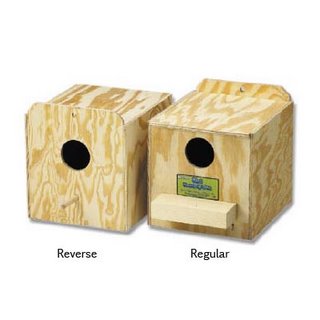 Before you help or pick up a young bird or nestling found on the ground, make sure that you follow these simple steps:
Before you help or pick up a young bird or nestling found on the ground, make sure that you follow these simple steps:
1. Don’t assume that the bird found on the ground has been “orphaned” by the parent bird. Most young birds on the ground have not been orphaned. A parent will not typically leave their young on their own. Usually the parent bird is nearby watching over their young and providing them with food. This may even be the case if a cat or dog has caught the bird.
Nesting a Robin’s Perogative
This photo was taken about in early May 2009, in my mother’s backyard.
Apparently, every year for the last 20+ years, a robin’s nest has been built in this very same spot. Of course, it’s not the same robin every year (Robins are not able to be octomoms). According to a zoology archive from the US Department of Energy, very few robins survive their first year. For those that survive, a life span of about 5 to 6 years is the norm.
So, back to this particular robin in her nest. I’ve been following this bird, and her family, with my camera and video phone for the last 2 weeks. I’ll update the blog later with photos of feeding, the daddy and such, but for now I wanted to focus on the momma and nesting habits of the robin. Personally, I think she looks a little cramped and uncomfortable in that nest. But she seems to be content.
Most robins place their nest in a crook of tree or a shrub about 5 to 20 feet above the ground. What makes this particular robins nest interesting is that it is always built at the intersection of the gutters along the top of the garage. It does seem to be the perfect little hideaway, and usually is, until nosy people such as myself hang out all day and try to get the perfect photo of a robin’s nesting habits. Then, it gets a little ridiculous while the robin and the person (me) have a battle of wills. The daddy will come hopping along, squawk at her, look at me, and take off. Then I have to leave to give them a chance to bond as a family and let them feed their babies.
But, I have a secret window spot too. So I’ve had the chance to see it all in action. Quite amazing.
In any case, another interesting facts about robins is that they can produce three successful broods in one year. On average, though, only 40 percent of nests successfully produce young. And, only 24% of those young will survive to November. So, in order to help robins thrive, it is suggested that a person can try to place fruit on tray feeders or plant fruiting shrubs to attract more of them to your backyard garden.
One great tray feeder is the Droll Yankee Seed Tray. This clear plastic tray measures 7.5″ and will fit all Droll Yankee tube feeders and many other brands. The Droll Yankee Seed Tray easily attaches with a threaded plug and is constructed of clear durable plastic.
What’s even better is that even if you don’t have trees, feeding the birds with the Droll Yankee Seed Tray will be no problem. The ultimate yard system comes with a 68 garden pole and pole adapter for mounting feeder on top. Also included are three 24 pole sections, a triple pole hook assembly, pole adapter, and ultimate pole auger.
So, for now, we’ll let this robin rest. More updates will be available as we follow this beautiful bird and her brood.

